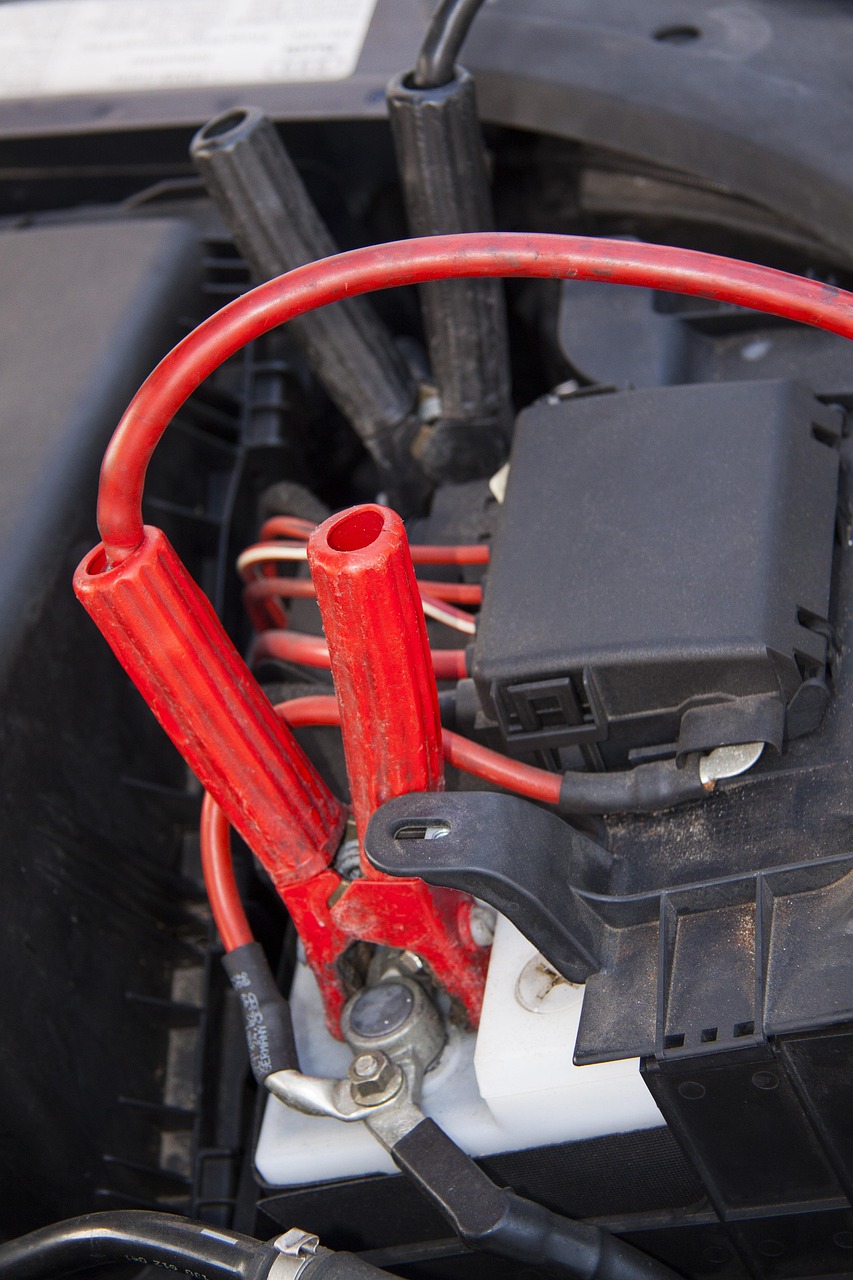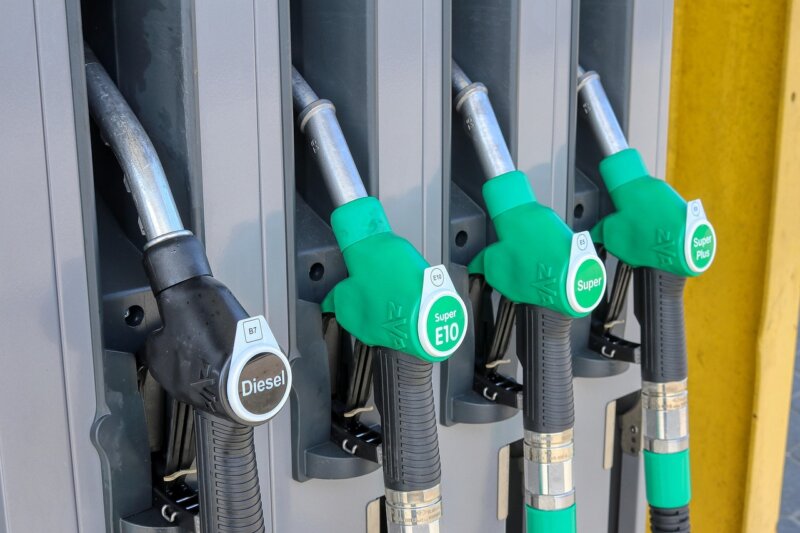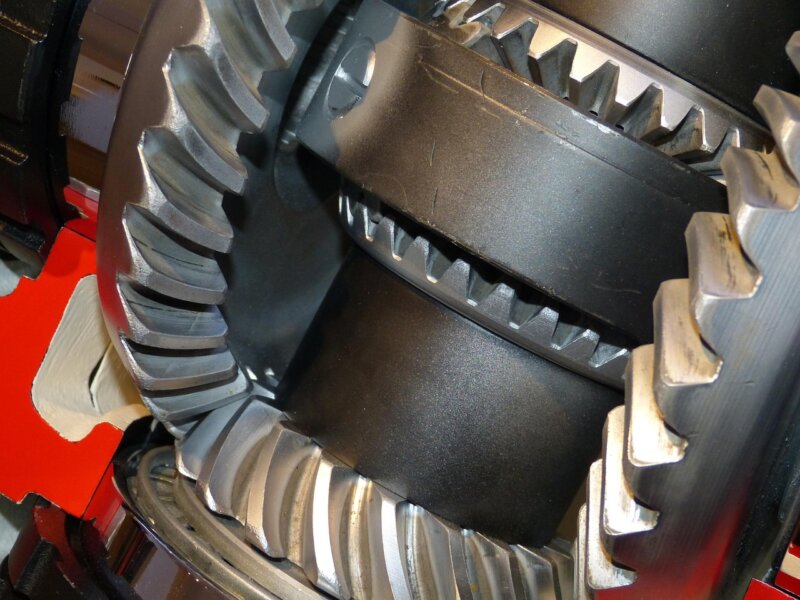Your electric vehicle will not start, and stress kicks in fast. Can you jump-start it without hurting anything? This guide breaks down the 12-volt battery and the high-voltage system, and shows how to keep jumpstarting safe.
You will learn what each battery does, why that split matters, and what steps to take at the curb. These tips support battery safety, protect your power supply, and cut your risk at charging points.
Understanding 12-Volt Batteries in EVs
The 12-volt battery runs low-power items called accessories. These include lights, locks, wipers, and the infotainment screen. The high-voltage system stores a lot more energy, but it does not handle those small jobs directly.
A traction battery is the big battery that drives the motors. It is kept isolated for safety. A small device, the DC-to-DC converter, feeds the 12-volt system with power from the traction battery while you drive or charge.
Role of the 12-Volt Battery in EV Systems
The 12-volt battery wakes the car and powers control modules. Without it, your EV may not unlock, boot up, or shift into drive. Safety features rely on it too.
Typical loads include:
- Exterior and interior lights
- Door locks and windows
- Wipers, mirrors, and seat memory
- Climate control valves and fans
- Airbags and stability control computers
The charge port latch and contactors also need 12 volts to connect and disconnect safely. That is why a dead 12-volt can stop charging, even if the traction battery is full. In most cases, the car recharges the 12-volt automatically while parked or driven.
Why EVs Can’t Rely Solely on High-Voltage Batteries
High-voltage packs are isolated by design for shock protection. They drive the motors and heat pumps, big jobs that need heavy power. Critical items like airbags or locks need steady low voltage right away, even if the main pack is offline.
The DC-to-DC converter keeps the 12-volt battery charged, similar to an alternator in a gas car. Federal safety rules, such as FMVSS No. 305a, require safe separation of these systems. Most EVs use lead-acid, AGM, or lithium 12-volt batteries to meet rising accessory power needs.
Jump-Starting an Electric Vehicle Safely
Jumpstarting an EV is about the 12-volt battery only. Never try to boost the high-voltage system. A simple mistake can damage electronics or raise fire risk, so know the exact steps before you try.
Steps to Jump-Start the 12-Volt Battery
Set up with care, then follow this jump-start procedure:
- Park on flat ground and set parking brakes. Keep clear of traffic.
- Power down both vehicles. Unplug the EV from any charger.
- Use a gas car or a portable jump pack as the donor, not another EV.
- Open the EV’s jump points or battery posts as shown in the owner’s manual.
- Connect cables in this order:
- Red clamp to the EV positive terminal.
- Red clamp to the donor positive terminal.
- Black clamp to the donor negative terminal.
- Black clamp to clean, unpainted metal on the EV, away from the battery.
- Start the donor and let it run 2 to 3 minutes.
- Power on the EV. If it does not wake, wait 15 seconds and try again.
- Once the EV boots up, keep it on for 20 to 30 minutes to recharge the 12-volt.
- Remove cables in reverse order, and secure the terminals.
- Check lights, windows, and the screen to confirm normal 12-volt function.
If the EV does not start after two tries, stop and call roadside assistance. Do not keep cranking or you may damage the donor or your DC-to-DC converter.
Precautions to Avoid Common Risks
Work only on the 12-volt system. High-voltage parts use bright orange cables. Stay away from those parts with tools and clamps.
- Wear eye protection and insulated gloves.
- Inspect both batteries for cracks, leaks, or swollen cases. Do not jump if damaged.
- Turn the EV fully off before connecting cables.
- Connect positive first, then negative. Disconnect in reverse order.
- Keep flames, sparks, and cigarettes away.
- Do not jump while the EV is charging. Unplug first.
- Use a gas vehicle or a tested jump pack as the donor. Skip using an EV as a donor.
- Follow the owner’s manual for your exact model. Procedures vary.
Incorrect steps can injure people, ruin electronics, or start a fire. Take your time, and stop if anything looks wrong.
Potential Hazards of Incorrect Jump-Starting
Wrong moves with cables can harm the 12-volt system or the high-voltage system very quickly. Good battery maintenance and careful setup reduce risk and repair costs.
Damage to Vehicle Electronics
Voltage spikes and reversed cables can blow fuses and control modules. The DC-to-DC converter is not built for starter-level loads. Gas engines may draw 300 to 600 amps, which can overwhelm EV parts.
Using an EV to jump another car often breaks maker guidance. That choice can void a warranty. Power surges can also corrupt software, which may affect safety systems and even shifter controls.
Repair costs can climb fast. If you are unsure about anything, use a jump pack or call a trained technician.
Risk of Personal Injury or Fire
Exposed conductors and damaged cables carry shock hazards. A short circuit during jumpstarting can ignite a fire in seconds.
Leaking 12-volt batteries can cause acid burns. Wear gloves and safety glasses. If a hybrid vehicle or EV was in a flood, do not touch it. Water can add new risks. Call emergency services and a certified EV shop.
Treat all high-voltage parts as live. Use insulated tools, and watch for heat buildup in extreme hot or cold weather. Both increase fire risk.
Bottom Line
Jump-starting an electric vehicle is different from a gas car. The 12-volt battery runs the brain and the accessories. Do not try to jump the high-voltage system. That move risks injury and major damage.
Use the safe steps listed above for your jump-start procedure. Follow the owner’s manual, and use a gas donor or a jump pack. Do not use your EV to boost other vehicles. When in doubt, contact roadside help or a qualified EV technician.
With the right plan for battery safety and battery maintenance, you protect your EV and yourself. That is smart care for your volt system at home, on the road, and at charging points.







